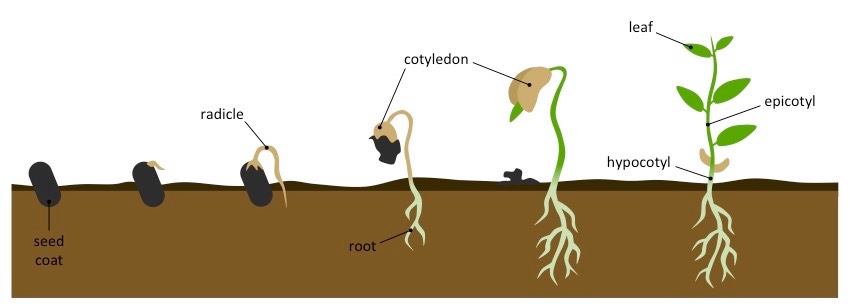The first step in the germination process is the metabolic activation of a dormant seed
- Germination begins with the absorption of water, which causes gibberellin to be produced
- Gibberellin triggers the synthesis of amylase, which breaks down starch into maltose
- Maltose is either hydrolysed (to glucose) for energy, or polymerised (to cellulose) for cell wall formation
- This energy and cellular building blocks is used to promote cell division and the growth of a nascent shoot
Once the seed is metabolically activated, germination proceeds according to the following stages:
- The seed coat (testa) ruptures and the embryonic root (radicle) grows into the ground to extract key nutrients and minerals
- The cotyledon emerges and produces the growing shoot’s first leaves
- The growing plant can be divided into the epicotyl (embryonic shoot), hypocotyl (embryonic stem) and developing roots
Germination Process

